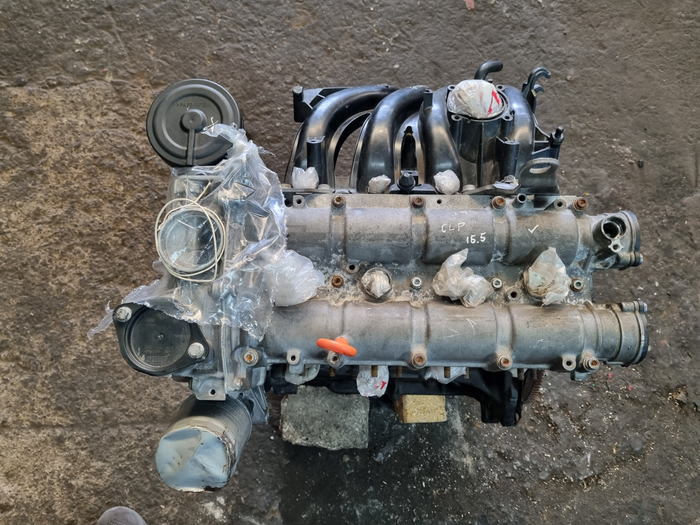Boost fuel efficiency with a top-tier clp engine.
Boost fuel efficiency with a top-tier clp engine.
Blog Article
How a Clp Engine Can Enhance Efficiency in Numerous Industries
The arrival of CLP engines marks a substantial shift in functional efficiency throughout numerous industries, driven by their capacity to enhance gas usage and decrease downtime. As organizations progressively prioritize sustainability together with effectiveness, the duty of CLP engines becomes even a lot more essential.
Overview of CLP Engines
CLP engines, or Continuous Liquid Propellant engines, stand for a substantial development in propulsion innovation, particularly for space applications. These engines use a continuous feed system that enables for the sustained expulsion of propellant, leading to enhanced performance and efficiency contrasted to typical strong or hybrid propulsion systems. By preserving a consistent circulation of liquid propellant, CLP engines can accomplish more exact drive control, which is important for maneuvering spacecraft in various objective scenarios.
The style of CLP engines integrates innovative materials and cutting-edge gas management systems. clp engine. This causes decreased weight and raised dependability, important variables for long-duration area missions. Moreover, the continuous procedure reduces the threat of combustion instability, an usual difficulty in standard rocket engines.

Advantages in Manufacturing
The manufacturing of Continual Liquid Propellant (CLP) engines offers a number of remarkable advantages that improve both effectiveness and cost-effectiveness. Among the key benefits is the streamlined manufacturing procedure, which lowers the complexity linked with typical propulsion systems. By utilizing liquid propellant, suppliers can accomplish higher accuracy in engine efficiency, bring about maximized power outcome and lowered waste.
In addition, CLP engines promote a greater level of modularity, enabling easier integration into numerous production lines. This versatility can substantially reduce lead times and improve overall operational flexibility. Making use of CLP innovation also tends to decrease the requirement for substantial maintenance as a result of less relocating parts, which converts into reduced downtime and operational prices.

Applications in Logistics
Leveraging Constant Liquid Propellant (CLP) engines in logistics provides considerable benefits in operational efficiency and reliability. These engines offer a robust service for various transportation needs, enabling the browse around this site smooth activity of items throughout huge distances. The fundamental style of CLP engines permits consistent power output, which converts right into smoother and a lot more predictable transportation schedules.
Among the crucial applications of CLP engines in logistics is in heavy-duty products transportation, where they can drive both ground and airborne cars. Their ability to maintain high efficiency under differing load conditions ensures that delivery timelines are fulfilled, consequently improving customer complete satisfaction. Additionally, CLP engines can be integrated right into automated logistics systems, assisting in real-time tracking and optimizing course planning.
Moreover, the durability of CLP engines lowers maintenance downtime, allowing logistics firms to maximize their functional abilities. This is particularly beneficial in warehousing procedures, where performance in managing and transferring items is important. As logistics continues to advance, the combination of CLP engines represents a forward-thinking technique that not only boosts performance but likewise supports the market's expanding needs for reliability and rate.
Effect On Power Effectiveness
Just How do Continuous Fluid Propellant (CLP) engines boost energy effectiveness in transportation? CLP engines use a regular circulation of liquid gas, optimizing combustion procedures and preserving a secure thrust outcome. This layout reduces power losses connected with typical combustion engines, where gas distribution can vary and bring about ineffectiveness.
The continuous operation of CLP engines enables a much more reliable thermal cycle, resulting in greater details impulse compared to conventional engines. clp engine. This equates to minimized gas intake for the exact same quantity of reference job done, dramatically lowering operational prices throughout various transportation industries, including aeronautics and maritime industries
Moreover, the ability of CLP engines to preserve ideal efficiency under differing lots problems reduces the need for regular acceleration and deceleration, even more improving fuel efficiency. Enhanced energy efficiency not only adds to cost savings but also leads to lower greenhouse gas emissions, aligning with international sustainability objectives.
Future Trends and Innovations
Arising improvements in Constant Liquid Propellant (CLP) engine technology guarantee to reinvent the landscape of transport effectiveness and sustainability. As industries pivot towards greener alternatives, CLP engines stand at the center, incorporating ingenious materials and design methodologies that boost efficiency while lessening ecological impact.
Among one of the most promising trends is the fostering of hybrid systems that combine CLP engines with renewable resource sources. This harmony can enhance fuel intake and minimize emissions, straightening with worldwide sustainability goals. In addition, improvements in computational fluid characteristics (CFD) are assisting in the design of even more aerodynamically effective engines, leading to lowered drag and enhanced gas effectiveness.
Moreover, the development of clever tracking systems is set to improve operational performances. These systems leverage information analytics and IoT innovation to optimize engine efficiency in real-time, ensuring that the engines run within their most efficient criteria.
As research study proceeds to check out different propellant formulations-- such as biofuels and artificial fuels-- the future of CLP engines looks appealing. By harnessing these technologies, markets can not only enhance their efficiency yet also add significantly to a cleaner, a lot more sustainable future in transportation.
Final Thought
In conclusion, CLP engines represent a significant improvement in effectiveness across several markets. The combination of sophisticated materials and fewer moving parts reduces maintenance requirements, while positioning with sustainability goals positions CLP engines as an essential see page modern technology for the future.
Report this page